Types of Air Masses Worksheet
Air masses play a significant role in weather patterns, and understanding their characteristics is crucial for meteorologists and weather enthusiasts alike. This worksheet aims to provide a clear and concise explanation of the different types of air masses, their features, and the weather conditions they bring. Whether you are a student studying meteorology or someone simply interested in learning more about the subject, this worksheet will serve as a valuable resource to enhance your understanding of air masses and their impact on our weather.
Table of Images 👆
More Other Worksheets
Kindergarten Worksheet My RoomSpanish Verb Worksheets
Cooking Vocabulary Worksheet
DNA Code Worksheet
Meiosis Worksheet Answer Key
Art Handouts and Worksheets
7 Elements of Art Worksheets
All Amendment Worksheet
Symmetry Art Worksheets
Daily Meal Planning Worksheet
What is an air mass?
An air mass is a large body of air in the atmosphere that has relatively uniform temperature, humidity, and pressure characteristics. These air masses form over large areas of land or water and can influence the weather conditions when they move into a new region. The characteristics of an air mass are determined by the geographic area over which it forms, and they can be classified based on their temperature and moisture content.
What are the characteristics used to classify air masses?
Air masses are classified based on their temperature and humidity characteristics along with the source region they originate from. The two main characteristics used for classification are temperature (whether the air mass is warm or cold) and humidity (whether it is dry or moist). These characteristics help meteorologists classify air masses into categories like continental (dry) or maritime (moist) and polar (cold) or tropical (warm). The source region of the air mass also plays a key role in determining its characteristics and classification.
What is a maritime air mass?
A maritime air mass is a large body of air that originates over the ocean. Due to its origin over water, maritime air masses tend to be moist and have higher humidity levels compared to continental air masses. These air masses can bring precipitation and milder temperatures when they move over land, influencing weather patterns and climate in coastal regions.
What is a continental air mass?
A continental air mass is a large body of air with relatively uniform temperature and humidity characteristics that originates over a landmass. These air masses are typically dry and can be either warm or cold, depending on their source region. Continental air masses tend to bring stable weather conditions and can influence the weather patterns in the regions they move into.
What is a polar air mass?
A polar air mass is a large body of air that originates in the polar regions near the North or South Pole. These air masses are known for their cold temperatures and can bring chilly weather to regions they move into. Polar air masses are often associated with clear skies and dry conditions due to their cold and stable nature.
What is a tropical air mass?
A tropical air mass is a large body of warm and moist air that originates over tropical oceans near the equator. It is characterized by high temperatures, high humidity levels, and instability, which can lead to the formation of thunderstorms and heavy rainfall. Tropical air masses typically bring warm and wet weather conditions to the regions they move into.
What are the characteristics of a maritime polar (mP) air mass?
A maritime polar (mP) air mass typically originates over cold oceanic regions such as the North Atlantic or North Pacific. It is moist and cold, and tends to bring stable weather conditions with overcast skies, precipitation, and fog. Due to the cold temperature of the ocean it originates from, this air mass is usually colder than a maritime tropical air mass, but milder than a continental polar air mass.
What are the characteristics of a maritime tropical (mT) air mass?
A maritime tropical (mT) air mass is warm and moist, typically originating from warm ocean waters. It carries high humidity levels and can bring warm temperatures, leading to potentially unstable weather conditions such as thunderstorms and heavy precipitation. This air mass tends to have a relatively low density compared to continental air masses, which can result in it being less stable and more prone to rising motions, contributing to the development of various types of weather systems.
What are the characteristics of a continental polar (cP) air mass?
A continental polar (cP) air mass is typically dry and cold, originating over northern Canada or the Arctic regions. It lacks moisture and is known for bringing cold temperatures and clear skies to areas it moves into. Due to its cold nature, cP air masses can create stable atmospheric conditions and lead to clear, frigid weather patterns with little to no precipitation.
What are the characteristics of a continental tropical (cT) air mass?
A continental tropical (cT) air mass is characterized by hot and dry conditions, originating over a large landmass with abundant sunshine leading to high temperatures. It forms during summertime and is typically associated with clear skies and low relative humidity. These air masses bring stable weather conditions and can lead to heat waves in the regions they influence.
Have something to share?
Who is Worksheeto?
At Worksheeto, we are committed to delivering an extensive and varied portfolio of superior quality worksheets, designed to address the educational demands of students, educators, and parents.





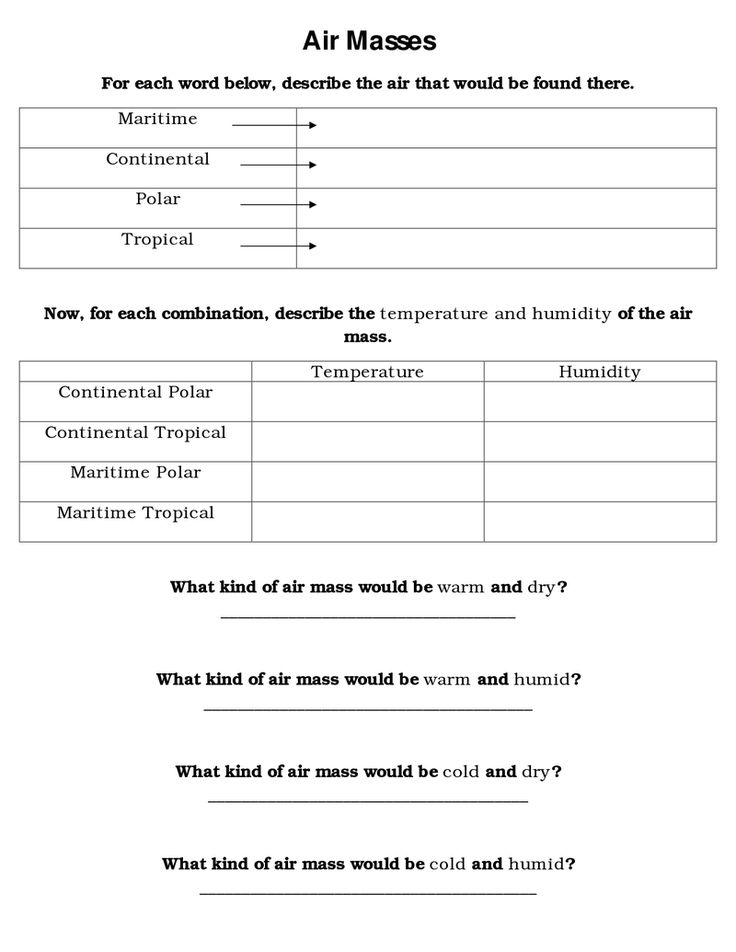
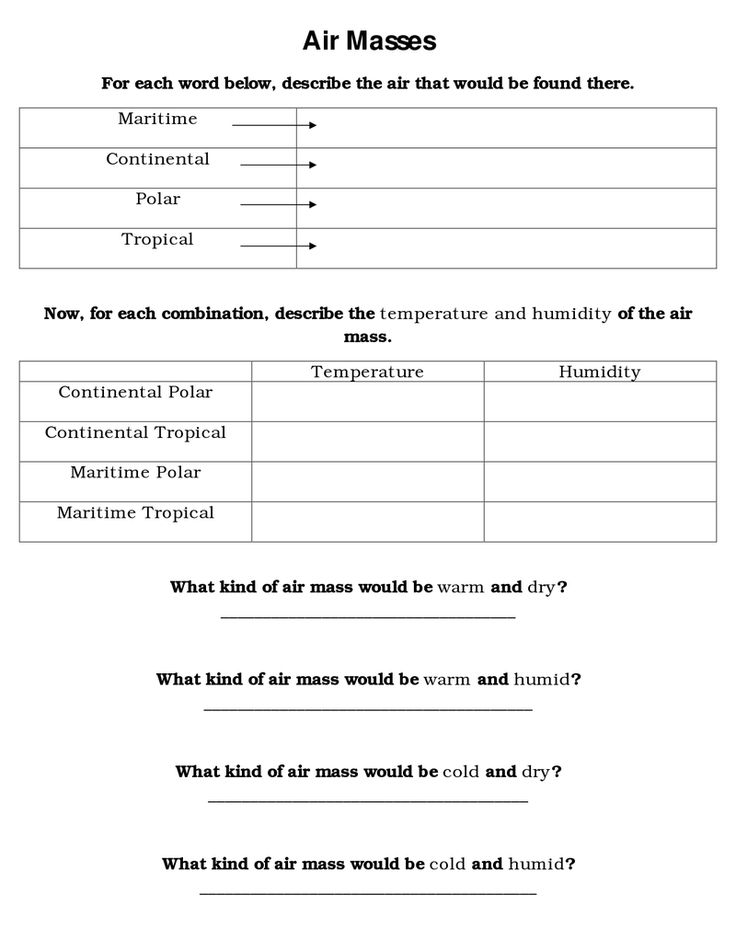
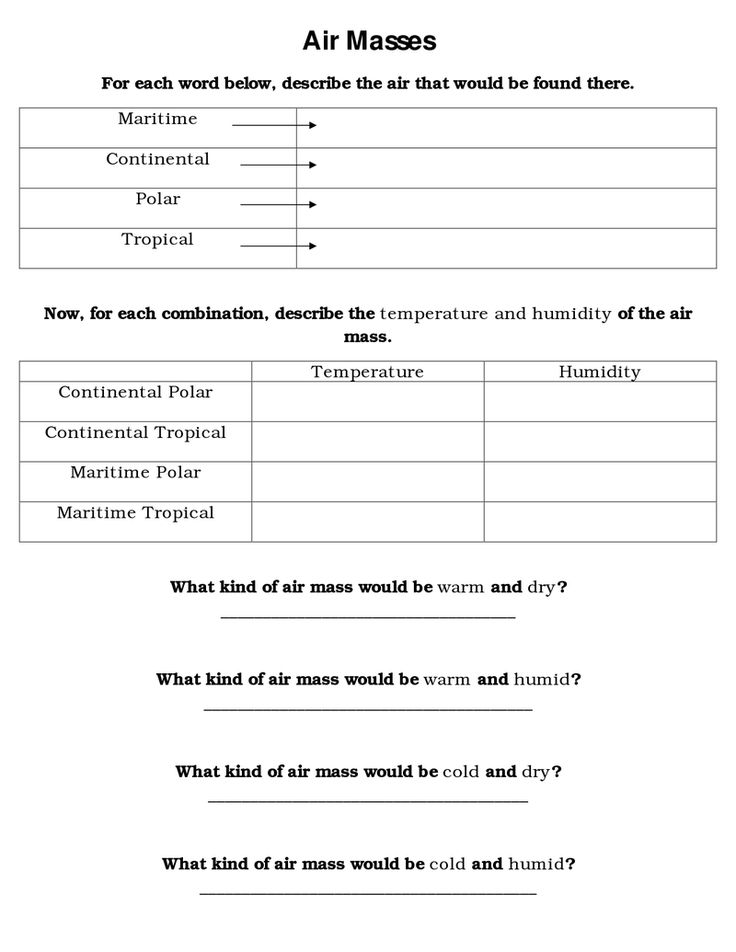
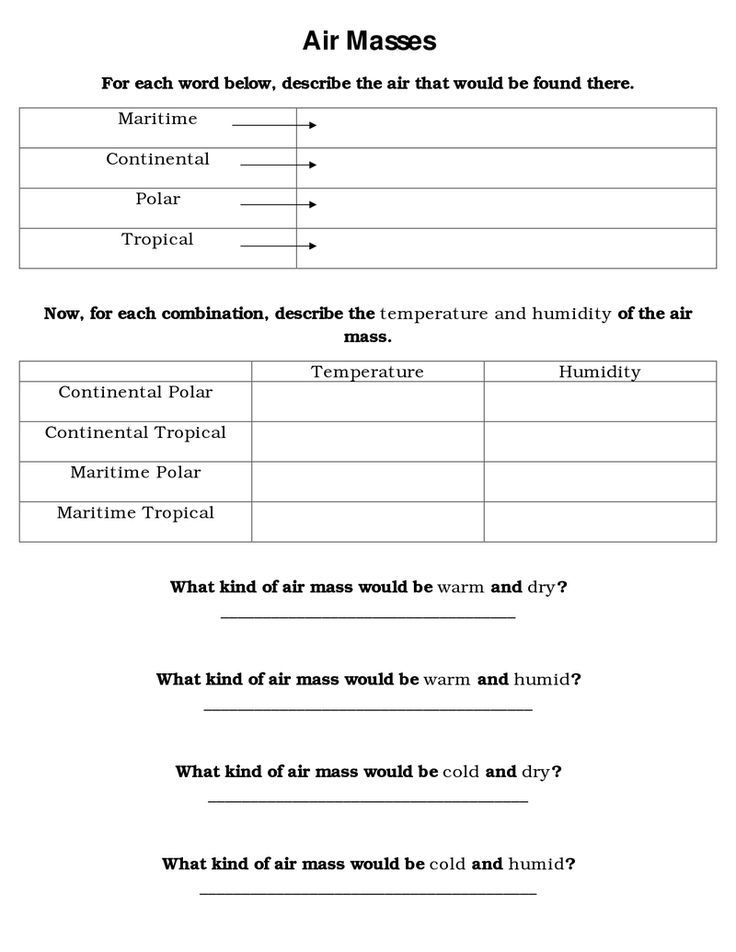
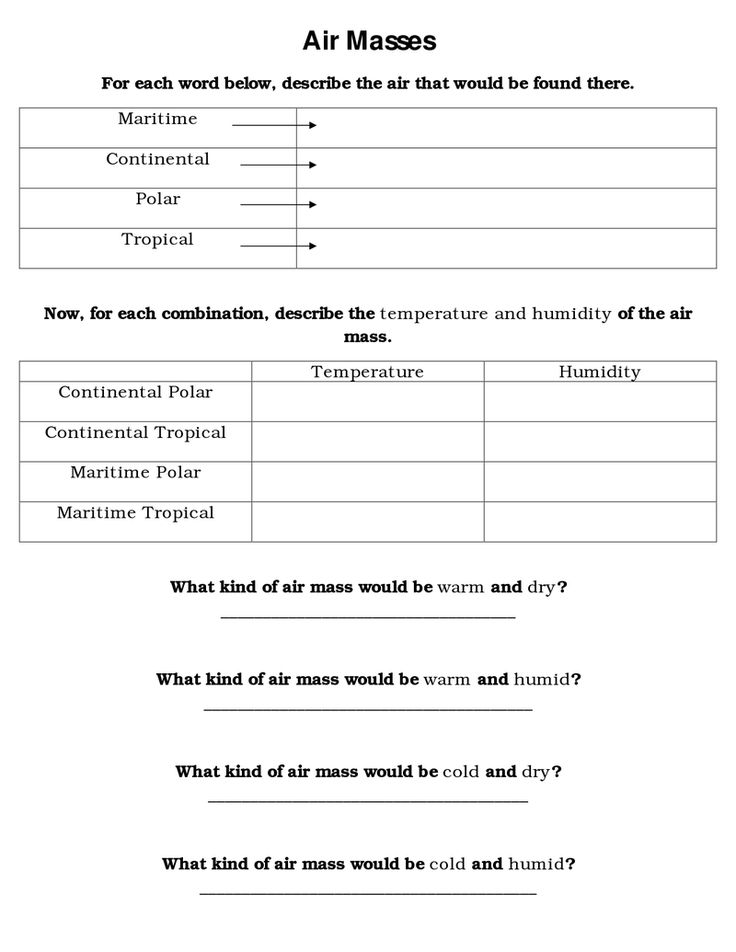
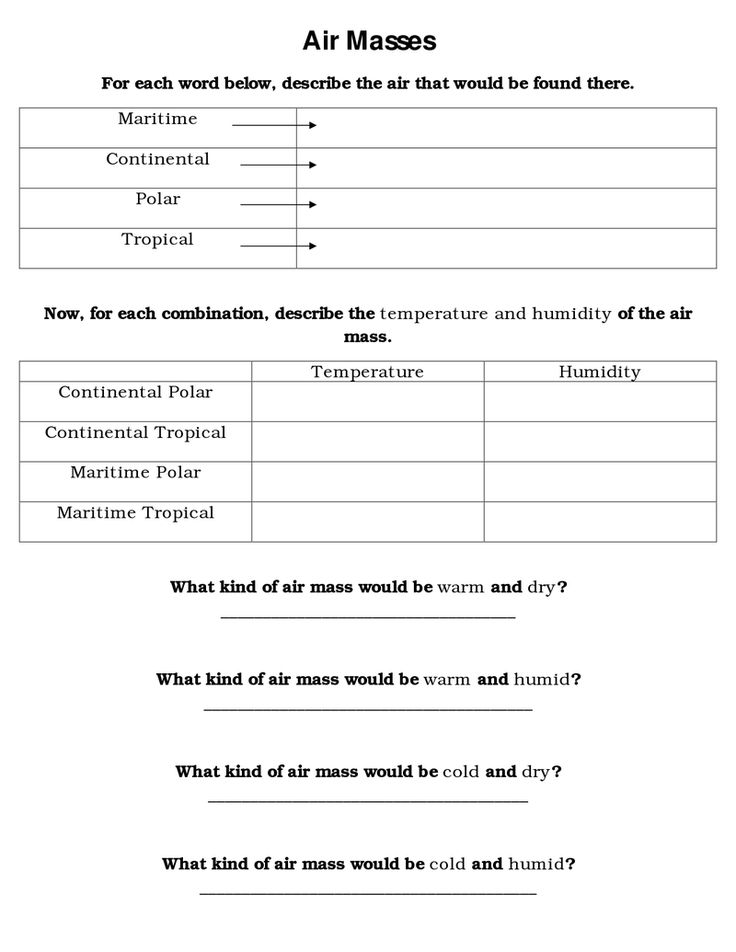
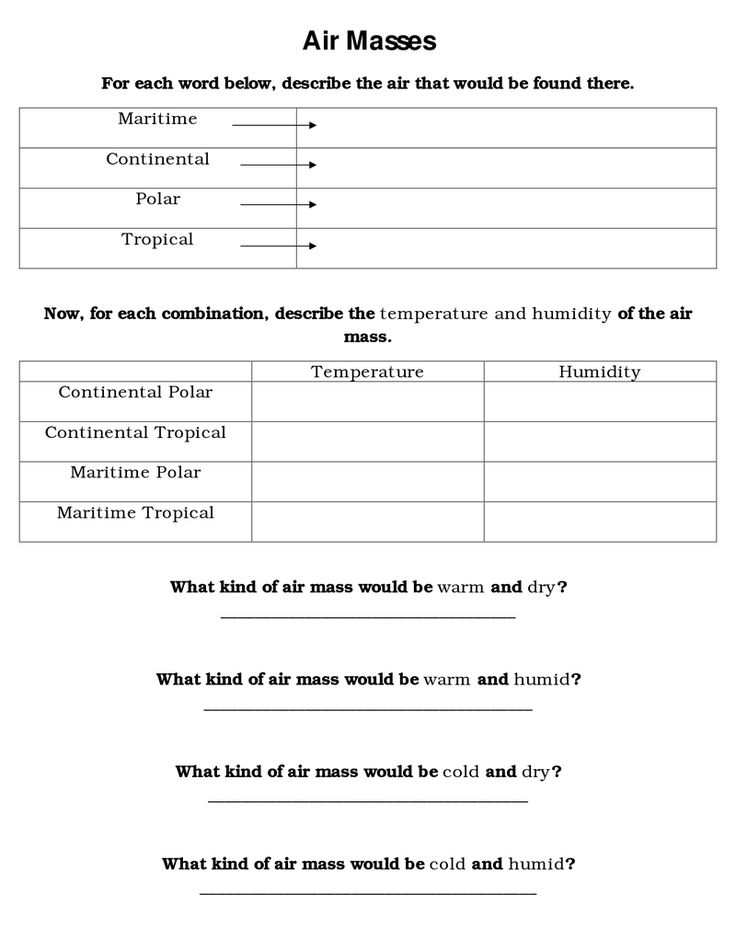
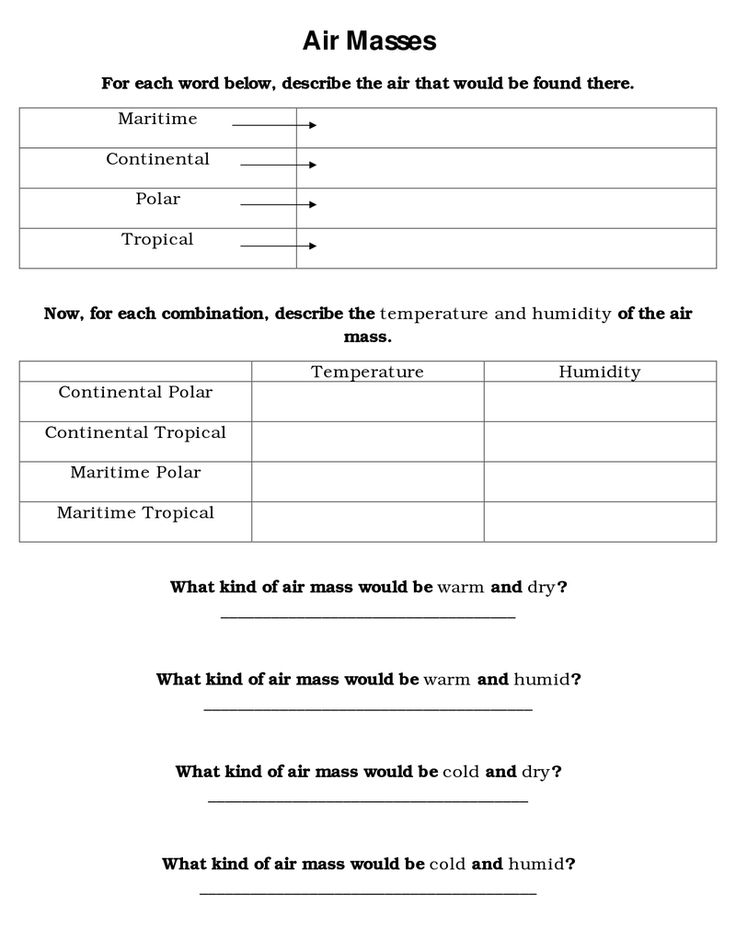
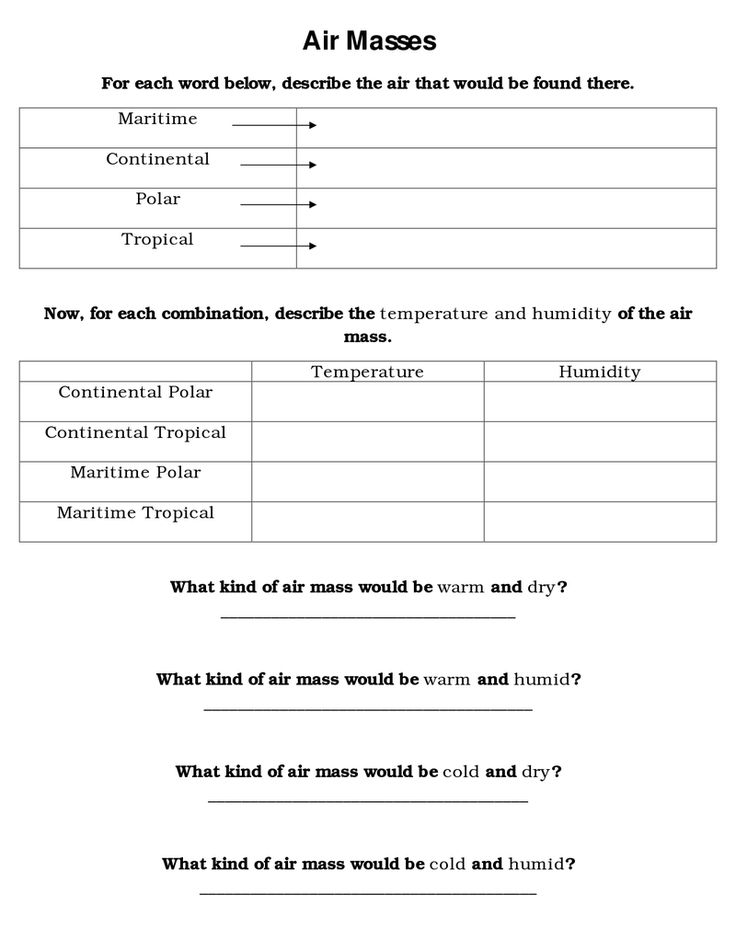
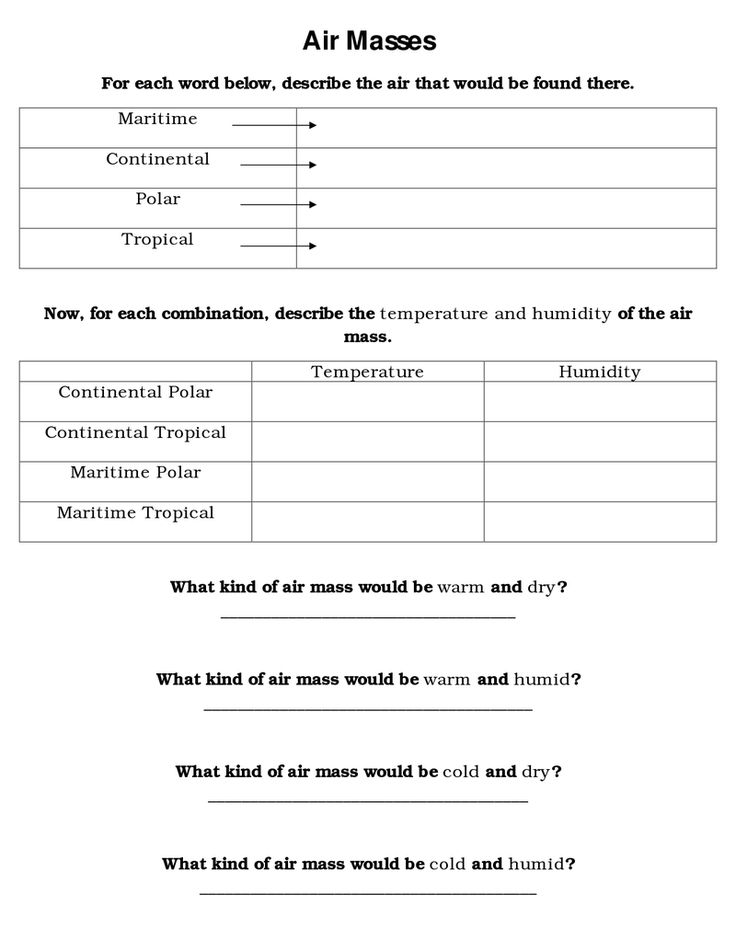
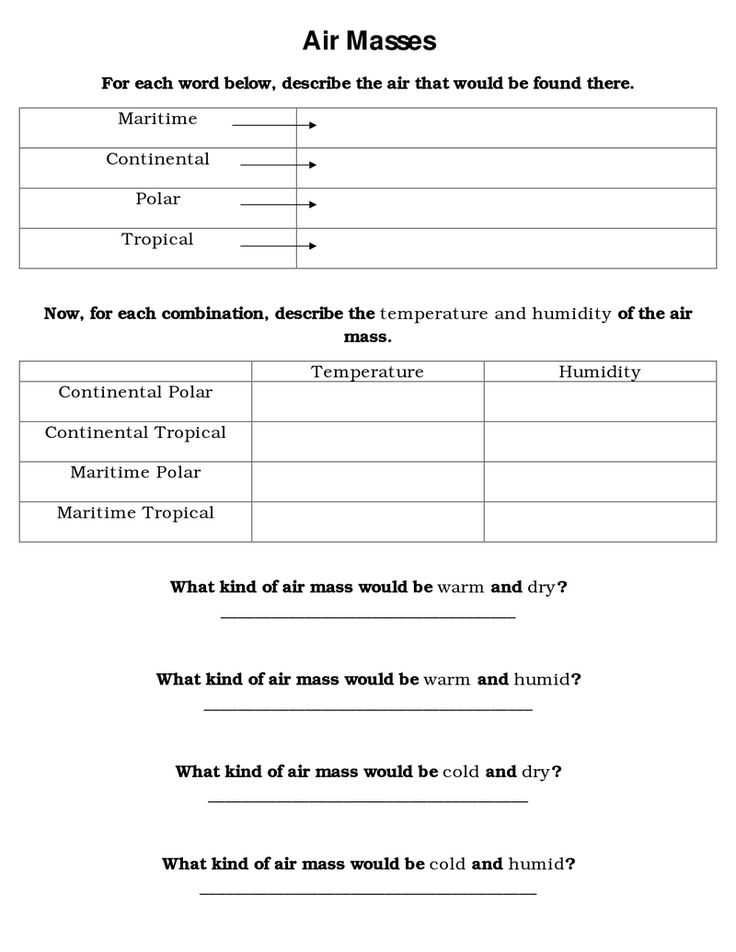
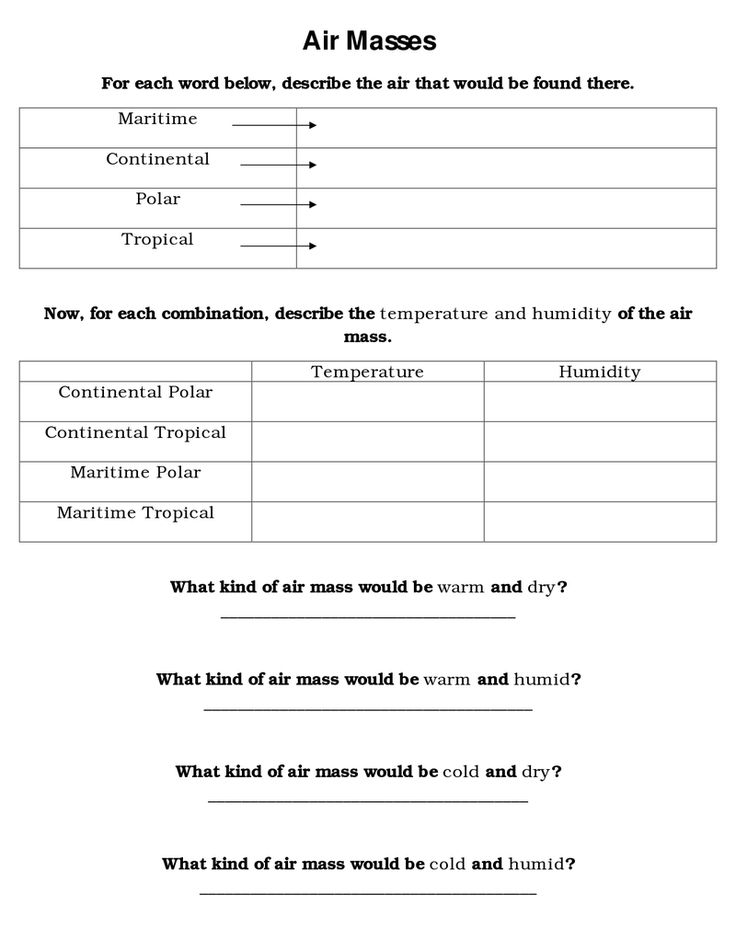
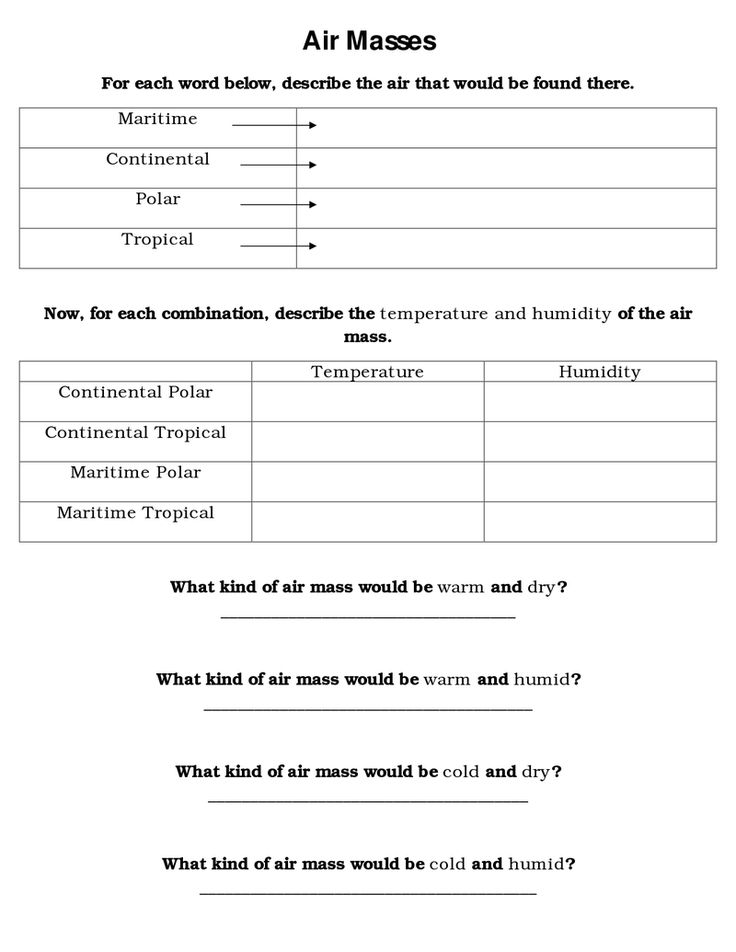
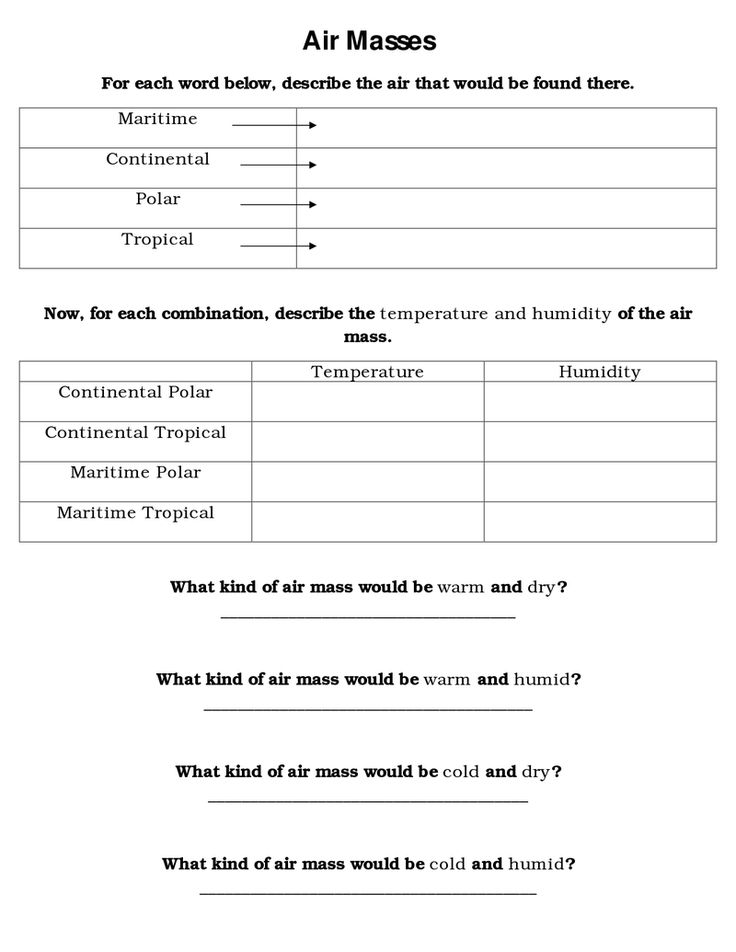
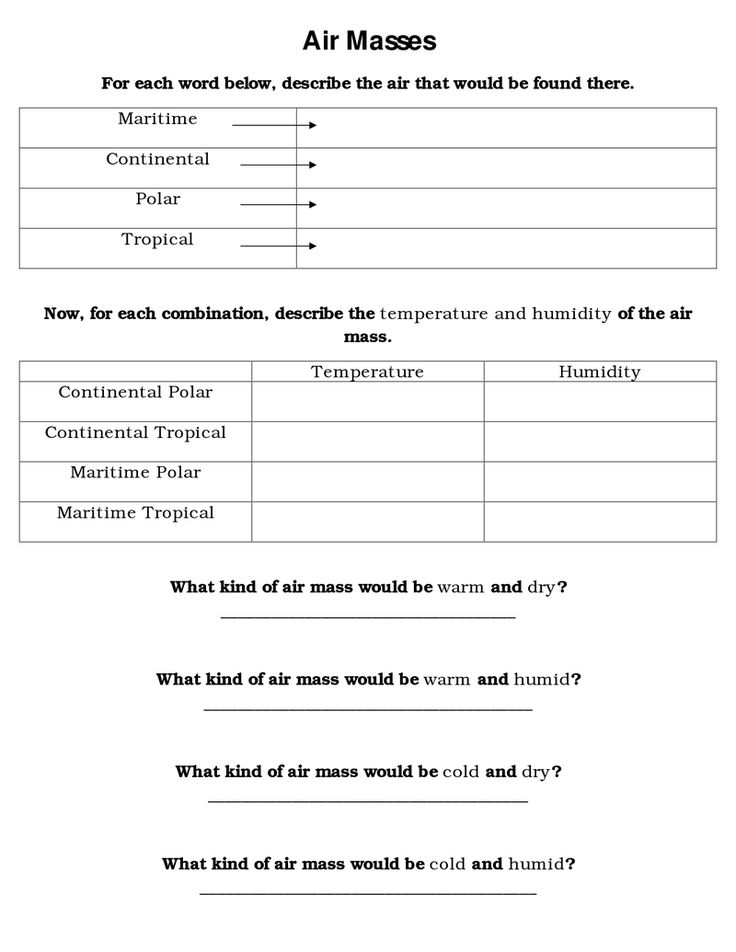
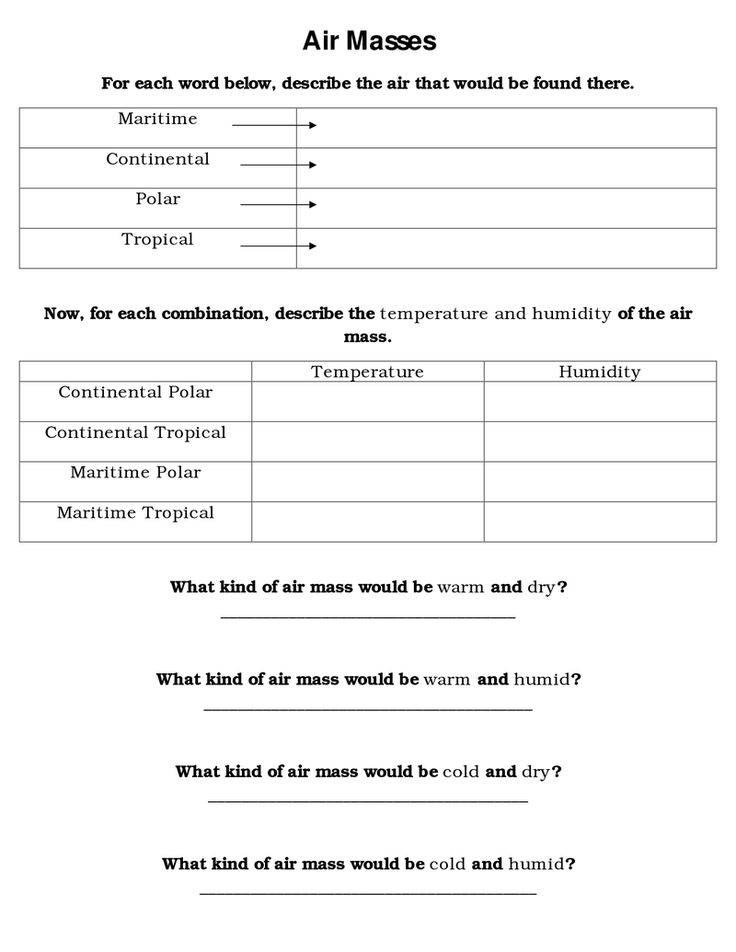
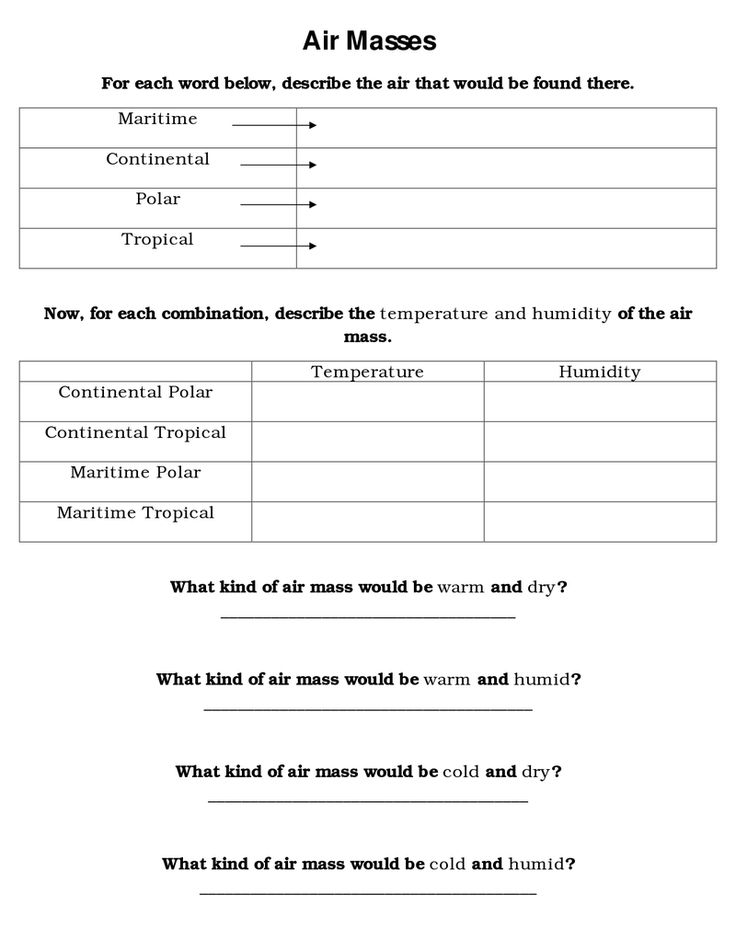














Comments